- Home
- Larry Niven
The Integral Trees - Omnibus Page 6
The Integral Trees - Omnibus Read online
Page 6
Clave made a torch from a chunk of bark and burned out some remaining patches. “Scrape that out and I think we can all sleep in it. Gavving, Jinny, you go back for Merril.”
When they started to move her, Merril woke instantly, happy and active and bubbling with plans. They coaxed her across the bark, ready for anything, and presently moored her in the scraped-out bottom of the Q.
Then there was nothing for it but to settle into the Q for early sleep.
Merril slept like a baby, but others shifted restlessly. Desultory conversations started and stopped. Presently Clave asked, “Jiovan, how are you doing?”
“How do you mean?”
“I mean the whole trip. How are you doing?”
Jiovan snorted. “I’m hungry. I hurt a lot, but I’m used to that. I can climb. Do you mean how are we doing? We won’t know that till we get home. Merril’s out of her head right now, but she could be right too.”
Clave was startled. “You mean, live here?”
“No, that’s crazy. I mean go back now. Kill something and smoke it and collect more fan fungus and go home. We’d be heroes, as much as any hunt party that comes home with meat, and I don’t mind telling you, I’m ready. I’m treefeeding sick of being one of the—the lames. I used to be the one who fed the tribe…and if the fan fungus will grow in the tuft—”
By now the whole troop was listening. Clave knew he was talking for an audience. He said, “Merril could be pretty sick, you know.”
“She feels great.”
“Oh, let’s see how she feels when it wears off. I might want to try it myself,” Clave chuckled. He was hoping it would drop there.
No chance, not with Alfin listening. “What about going home? We’ve got what we came for.”
“I don’t think so. We sure haven’t scraped out all the tribemarks, have we, Grad?”
“They’re supposed to run all along the trunk.”
“Then let’s go at least as far as the middle. We already know we can feed ourselves. Who knows what else we’ll find? The nose-arm was good eating, but we’ve only found one, and we couldn’t feed him in the tuft. We can pick up some fan fungus on the way back. What else? Are the flashers good to eat? Could we transplant those shelled things?”
The Grad was catching fire. “Get them growing just above the tuft. It might work. Sure I’d like to go on. I want to see what it’s like when there isn’t any tidal force at all.”
“We already know what Merril would say. Anyone else?”
Alfin grunted. Nobody else spoke.
“We go on,” Clave said.
Chapter Five
MEMORIES
It was there again. There was a special frequency of light that Sharls Davis Kendy had sought for five hundred years. He had found it fifty-two years ago, and forty-eight, and twenty, and…six certain sightings and another ten probable. The locus moved about. This time it was west of his position, barely filtering through the soup of dust and gas and dirt and plant life: the light of hydrogen burning with oxygen.
Kendy held his attention on a wavering point within the Smoke Ring. Rarely did the CARM even acknowledge that his signal had penetrated the maelstrom but he never considered not trying. “Kendy for the State. Kendy for the State.”
The CARM’s main motor would run for hours now. It would accelerate slowly, too slowly: pushing something massive. What were they doing in there?
Had they entirely forgotten Discipline and Sharls Davis Kendy?
Kendy had forgotten much, but what remained to him was as vivid as the moment it had happened. These futile attempts at contact needed little of his attention. Kendy took refuge in memory.
The target star was yellow-white, with a spectrum very like Sol’s, circling an unseen companion. At 1.2 solar masses, T3 was minutely brighter and bluer than Sol: about G0 or G1. The companion, at half a solar mass, would be a star, not a planet. It should at least have been visible.
The State had telescopic data from earlier missions to other stars. There was at least a third, planet-sized body in this system. There might be a planet resembling the primordial Earth; in which case Discipline would fulfill its primary mission by seeding its atmosphere with oxygen-producing algae. On a distant day the State would return to find a world ripe for colonization.
But someone would have come anyway, to probe the strangeness of this place.
Discipline was a seeder ramship, targeted for a ring of yellow stars that might host worlds like the primordial Earth. Its secondary mission was a secret known only to Kendy; but exploration was a definite third on the list; Discipline would not stop here. Kendy would skim past T3, take pictures and records, and vanish into the void. He might slow enough to drop a missile with a warhead of tailored algae, if a target world could be found.
Four of the crew were in the control module. They had the telescope array going and a watery picture of a yellow-white star on the big screen, with a pinpoint of fierce blue-white light at its edge. Sam Goldblatt had a spectrum of T3 displayed on a smaller screen.
Sharon Levoy was lecturing for the record, nobody else was listening. “That solves that. Levoy’s Star is an old neutron star, half a billion to a billion years beyond its pulsar stage. It’s still hotter than hell, but it’s only twenty kilometers across. The radiating surface is almost negligible. It must have been losing its spin and its residual heat for all of that time. We didn’t see it because it isn’t putting out enough light.
“The yellow dwarf star might have planets, but we can expect that their atmospheres were boiled away by the supernova event of which Levoy’s Star is the ashes—”
Goldblatt snarled, “We’re supposed to be the first expedition here! Prikazyvat Kendy!”
The crew were not supposed to be aware that the ship’s computer and its recorded personality could eavesdrop on them. Therefore Kendy said, “Hello, Sam. What’s up?”
Sam Goldblatt was a large, round man with a bushy, carefully tended moustache. He’d been chewing it ever since Levoy found and named the neutron star. Now his frustration had a target. “Kendy, do you have records of a previous expedition?”
“No.”
“Well, check me out. Those are absorption lines for oxygen and water, here, aren’t they? Which means there’s green life somewhere in that system, doesn’t it? And that means the State sent a seeder here!”
“I noticed the spectrum. After all, Sam, why shouldn’t plant life develop somewhere on its own? Earth’s did. Besides, those lines can’t represent an Earthlike world. They’re too sharp. There’s too much oxygen, too much water.”
“Kendy, if it isn’t a planet, what is it?”
“We’ll learn that when we’re closer.”
“Hmph. Not at this speed. Kendy, I think we should slow down. Decelerate to the minimum at which the Bussard ramjet will work. We won’t waste onboard fuel, we’ll get a better look, and we can accelerate again when we’ve got the solar wind for fuel.”
“Dangerous,” said Kendy. “I recommend against it.” And that should have been that.
For five hundred and twelve years Kendy had been editing clumps of experience from his memory wherever he decided they weren’t needed. He didn’t remember deciding to follow Goldblatt’s suggestions. Goldblatt must have persuaded Captain Quinn and the rest of the crew, and Kendy had given in…to them? or to his own curiosity?
Kendy remembered:
Levoy’s Star and T3 circled a common point in eccentric orbits, at a distance averaging 2.5 × 108 kilometers, with an orbital period of 2.77 Earth years. The neutron star had been behind the yellow dwarf while Discipline backed into the system. Now it emerged into view of Discipline’s telescope array.
He saw a ring of white cloud, touched with green, with a bright spark at its center. The spectral absorption lines of water and oxygen were coming from there. It was tiny by astronomical standards: the region of greatest density circled the neutron star at 26,000 kilometers—about four times the radius of the Earth.
&nbs
p; “Like a Christmas wreath,” Claire Dalton breathed. The sociologist’s body was that of a pretty, leggy blonde, but her corpsicle memories reached far back…and what was she doing on the bridge? Captain Dennis Quinn might have invited her, the way they were standing together. It indicated a laxity in discipline that Kendy would have to watch.
The crew of Discipline continued to study the archaic Christmas wreath. Until Sam Goldblatt suddenly crowed, “Goldblatt’s World! Prikazyvat Kendy, record that, Goldblatt’s World! There’s a planet in there.”
“I’m not close enough to probe that closely, Sam.”
“It has to be there. You know how a gas torus works?”
It was there in Kendy’s memory. “Yes. I don’t doubt you’re right. I can bounce some radar off that storm complex when we pass.”
“Pass, hell. We’ve got to stop and investigate this thing.” Goldblatt looked about him for support. “Green means life! Life, and no planet! We’ve got to know all about it. Claire, Dennis, you see that, don’t you?”
The crew included twelve citizens and eight corpsicles. The corpsicles might argue, but they had no civil rights; and the citizens had less than they thought. For reasons of morale, Kendy maintained the fiction that they were in charge.
Goldblatt’s suggestion was not worth considering. Kendy said, “Think. We’ve got fuel to decelerate once and once only. We’ll need it when we reach Earth.”
“There’s water in there,” Dennis Quinn said thoughtfully. “We could refuel. I bet the water’s rich in deuterium and tritium. Why not, it’s circling the ashes of a supernova!”
Claire Dalton was gazing at the screen, at a perfect smoke ring with a tiny hot pinpoint in its center. “The neutron star has cooled off, lost most of its rotation and most of its heat and most of that ferocious magnetic field the pulsars have. It’s bright, but it’s too small to be giving off much real heat. We could probably live in there ourselves.” She looked around her. “Isn’t this what we came for? The strangeness of the universe. If we don’t stop now, we might as well be back on Earth.” The contempt in her voice was unmistakable.
Kendy’s memory jumped at that point. Hardly surprising. That must have been the true beginning of mutiny.
He remembered reviewing and updating his files on gas torus mechanics.
Two planets circled wide around the twin stars: Jupiter-style gas giants with no moons. The old supernova must have blasted away anything smaller.
A body did circle the neutron star. One limb of the Smoke Ring was curdled, a distorted whirlpool of storm. Hidden within was a core of rock and metals at 2.5 Earth masses. There was some oxygen and some water vapor in its thick, hot atmosphere. Goldblatt’s World was tidally locked, and uninhabitable. Strip away its atmosphere and it might have harbored Earthly life—but its atmosphere was tremendous, dwindling indefinitely into the Smoke Ring itself.
The strong oxygen-water lines were coming from the gas torus.
A gas torus is the result of a light mass in orbit around a heavy mass, as Titan orbits Saturn. It may be that the light mass is too weak to hold its atmosphere. The faster molecules of air escape—but they go into orbit about the heavy mass. Thus, Titan circles Saturn within a ring of escaped Titanian atmosphere, as Io orbits Jupiter within a ring of sulfur ionized by Jupiter’s ferocious magnetic field.
A gas torus is thin. The gas must be so rarefied that each molecule can be considered to be in a separate orbit: it must reasonably expect to circle halfway round the primary mass without bumping another molecule. Under such circumstances, a gas torus is stable. The occasional stray photon will bump a molecule into interstellar space; but the molecules are continually reencountering the satellite body.
Titan—smaller than Mars, no larger than Ganymede—carries an atmosphere of refined smog at one and a half times Earth’s sea level pressure. The atmosphere is continually being lost, of course, but some of it continually returns from the gas torus.
Levoy’s Star was an extreme case, and a slightly different proposition too.
The Smoke Ring was the thickest part of the gas torus around Levoy’s Star. At its median it was as dense as Earth’s atmosphere a mile above sea level: too dense for stability. It must be continually leaking into the gas torus. But the gas torus was stable: dense, but held within a steep gravitational gradient. Molecules continually returned from the gas torus to the Smoke Ring, and from the Smoke Ring to the storm of atmosphere surrounding Goldblatt’s World.
“Goldblatt’s World must have started life as a gas giant planet like, say, Saturn. Probably it didn’t fall into range until the pulsar had lost a good deal of its heat and spin.” Sharon Levoy’s crisp voice spoke within Kendy’s memory. “Then it was captured by strong Roche tides. It may have dropped close enough to lose water and soil as well as gas. For something like a billion years Goldblatt’s World has been leaking gas into the Smoke Ring, and the Smoke Ring has been leaking to interstellar space. It’s not stable, exactly, but hell, planets aren’t stable over the long run.”
“It won’t be stable that much longer,” Dennis Quinn interrupted. “Most of Goldblatt’s World is already gone. Ten million years, or a hundred million, and the Smoke Ring will be getting rarefied.”
Kendy remembered these things. The records had been made while Discipline’s instruments probed the Smoke Ring from close range. Already some of the crew were exploring the Smoke Ring via CARMs. Their reports were enthusiastic. There was life, DNA-based; the air was not only breathable, but tasted fine…
Kendy didn’t remember bringing Discipline into orbit around Levoy’s Star. He must have expended his onboard fuel, postponing by several years his arrival at the target stars along his course. Why?
Claire Dalton’s voice: “We’ve got to get out of this box. It’s running down. A little of what we recycle is lost every time around. There’s more than water in there; there’s air, there’s probably even fresh fertilizer for the hydroponics tanks!”
It was Sharls Davis Kendy who ruled Discipline. Discipline’s crew of twenty was hardly necessary to run a seeder ramship. The State had chosen them as a reservoir of humanity: a tiny chunk of the State, far removed from any local disaster. One planet, one solar system, were too fragile to ensure the survival of the State of humankind itself. Every ship in the sky had a crew large enough to begin the human race over again: their secondary mission, if it ever became necessary. The State expected no such disaster, ever; but the investment was trivial compared to the reward.
When had he lost control? Perhaps they had threatened to bypass the computer and go to manual control. They couldn’t; but morale would disintegrate if they ever learned how little control they really had. Kendy might have surrendered on that basis.
Or he might have been curious.
He did not remember any part of what must have been a mutiny. He must have been played for a fool; he might not want to remember that. The crew had departed with eight of the ten CARMs and rifled the hydroponics to boot! It should never have been allowed.
He was reasonably sure that seven of the CARMs were inoperable. Some equipment might have been salvaged…and the last CARM had now ceased its spray of incandescent water vapor. Kendy ceased beaming his message. The Smoke Ring glowed white and featureless beneath him.
One day he would know. Would they remember him at all?
Kendy waited.
Chapter Six
MIDDLE GROUND
The patch of old-man’s-hair should have been tended long since. It was fifty to sixty meters across and had eaten half a meter deep into live wood. Parasol plants had rooted in the resulting compost, and matured, and spread their brightly colored blossoms to attract passing insects.
Minya watched the fire spread in intersecting curves within the fungus patch. Breezes tossed the choking smoke in unpredictable directions. The smoke drove clouds of mites out of the fungus and into the open. She was wishing Thanya’s triad would arrive with water.
There were three triads of the T
riune Squad now on the trunk. Minya, Sal, and Smitta were nearing the median. Jeel’s triad traversed up and down the trunk, ferrying provisions from the tuft, while Thanya’s brought water from the lee.
Fire was usually no problem, but mistakes could happen.
“I love these climbs,” Smitta said. She floated with her toes gripping an edge of bark. This close to the median, it was enough to hold her against the feeble tide. “I like floating…and where else can you see the entire Smoke Ring?”
Minya nodded. She didn’t want to talk. When a problem couldn’t be solved and wouldn’t go away, what could one do but run? She had run as far as a human being could go. It was working: she felt at peace here, halfway between infinities.
The tree seemed to run forever in both directions. The Dark Tuft, backlit by Voy and the sun, was a halo of green fluff with a black core. Outward, Dalton-Quinn Tuft was barely larger. A few drifting clouds, wisps of green forest, whorls of storm were all outward. Eastward was a point of bright light off-center in a dark rim: the same small pond that had been drifting tantalizingly closer for a score of days.
Maybe, maybe it would come. They didn’t talk about it. Bad luck.
Between the drought and the recent political upsets, it had been too long since the Triune Squad had been free for tree-tending duty. They had been needed as police. One could hope that the executions had settled the troubles; but now the triads were finding parasites and patches of old-man’s-hair everywhere on the trunk. Today they were burning virtually a field of the horrid stuff.
Motion caught Minya’s eye, outward and windward. Blue-against-blue, hard to see, something big. The sun was nearly at nadir, glaring up. She held a hand beneath her eyes, and squinted, and presently said, “Triune.”
Smitta snapped alert. “Interested in us? Sal!”
Sal sang out from behind the smoke cloud. “I see it.”
Minya said, “They’re interested. They’re pretty close already.”

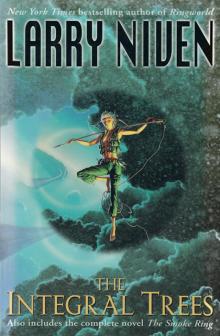 The Integral Trees - Omnibus
The Integral Trees - Omnibus A World Out of Time
A World Out of Time Crashlander
Crashlander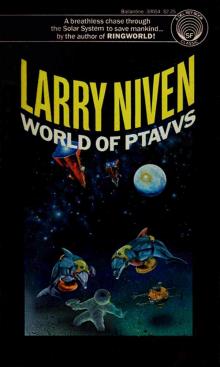 The World of Ptavvs
The World of Ptavvs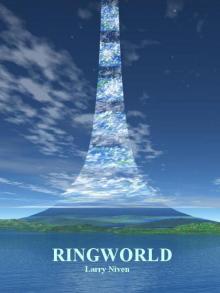 Ringworld
Ringworld Juggler of Worlds
Juggler of Worlds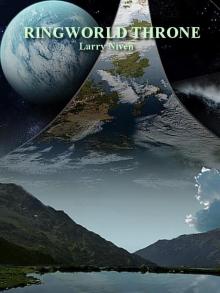 The Ringworld Throne
The Ringworld Throne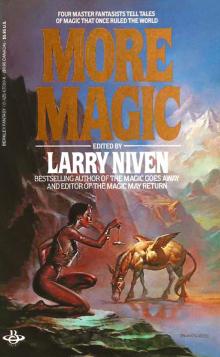 The Magic Goes Away Collection: The Magic Goes Away/The Magic May Return/More Magic
The Magic Goes Away Collection: The Magic Goes Away/The Magic May Return/More Magic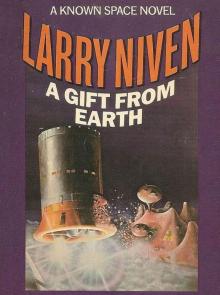 A Gift From Earth
A Gift From Earth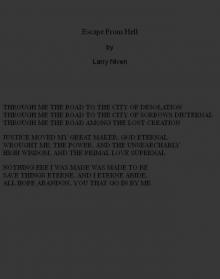 Escape From Hell
Escape From Hell Larry Niven’s Man-Kzin Wars - VII
Larry Niven’s Man-Kzin Wars - VII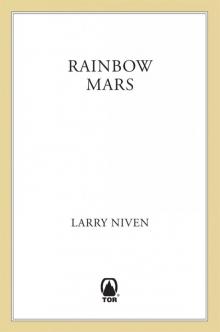 Rainbow Mars
Rainbow Mars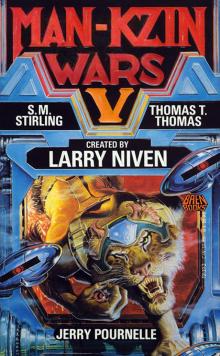 Larry Niven’s Man-Kzin Wars - V
Larry Niven’s Man-Kzin Wars - V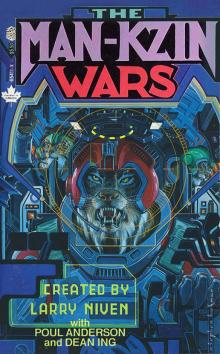 Larry Niven’s Man-Kzin Wars - I
Larry Niven’s Man-Kzin Wars - I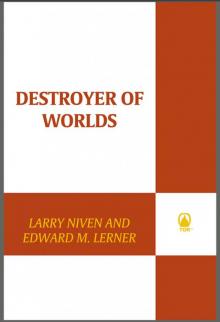 Destroyer of Worlds
Destroyer of Worlds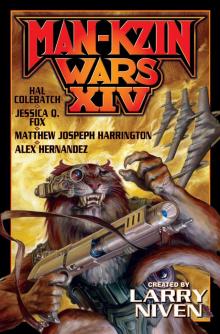 Man-Kzin Wars XIV
Man-Kzin Wars XIV Treasure Planet
Treasure Planet N-Space
N-Space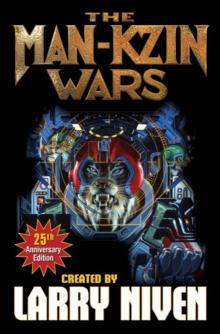 Man-Kzin Wars 25th Anniversary Edition
Man-Kzin Wars 25th Anniversary Edition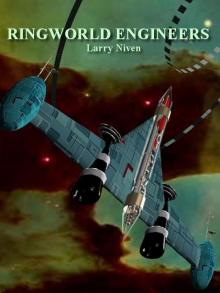 The Ringworld Engineers
The Ringworld Engineers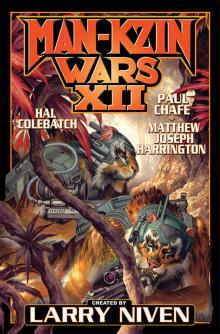 Larry Niven’s Man-Kzin Wars - XII
Larry Niven’s Man-Kzin Wars - XII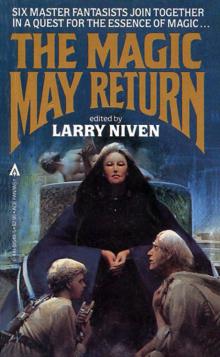 The Magic May Return
The Magic May Return Tales of Known Space: The Universe of Larry Niven
Tales of Known Space: The Universe of Larry Niven The Magic Goes Away
The Magic Goes Away Larry Niven’s Man-Kzin Wars - III
Larry Niven’s Man-Kzin Wars - III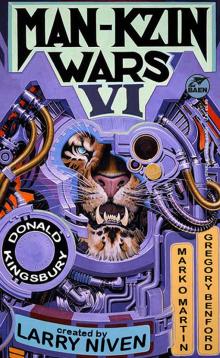 Larry Niven’s Man-Kzin Wars - VI
Larry Niven’s Man-Kzin Wars - VI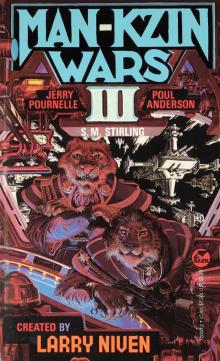 Man-Kzin Wars III
Man-Kzin Wars III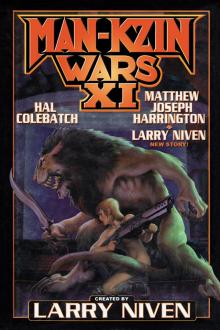 Larry Niven’s Man-Kzin Wars - XI
Larry Niven’s Man-Kzin Wars - XI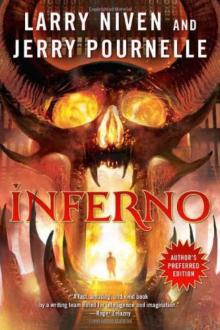 Inferno
Inferno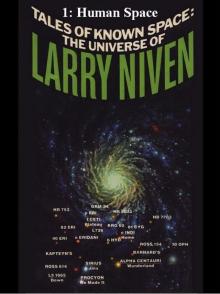 01-Human Space
01-Human Space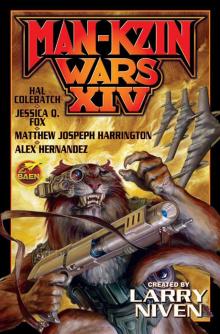 Larry Niven’s Man-Kzin Wars - XIV
Larry Niven’s Man-Kzin Wars - XIV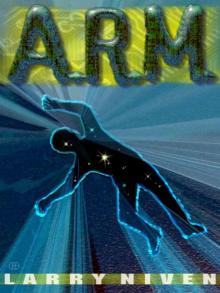 The Long Arm of Gil Hamilton
The Long Arm of Gil Hamilton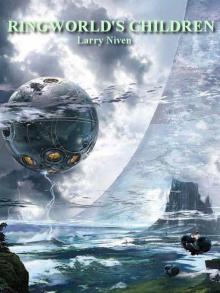 Ringworld's Children
Ringworld's Children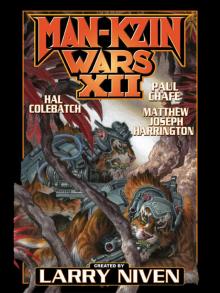 Man-Kzin Wars XII
Man-Kzin Wars XII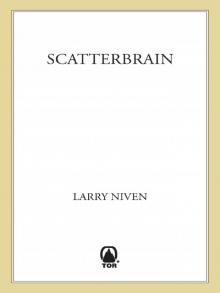 Scatterbrain
Scatterbrain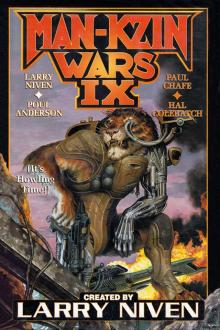 Man-Kzin Wars 9
Man-Kzin Wars 9 Man-Kzin Wars XIII
Man-Kzin Wars XIII Flatlander
Flatlander Man-Kzin Wars V
Man-Kzin Wars V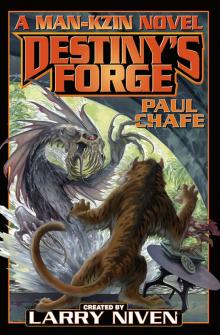 Destiny's Forge
Destiny's Forge Scatterbrain (2003) SSC
Scatterbrain (2003) SSC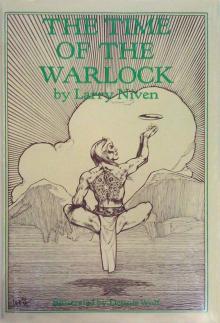 The Time of the Warlock
The Time of the Warlock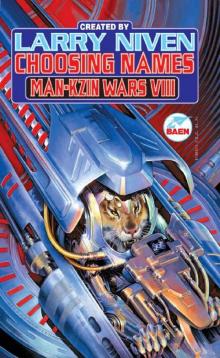 Choosing Names: Man-Kzin Wars VIII
Choosing Names: Man-Kzin Wars VIII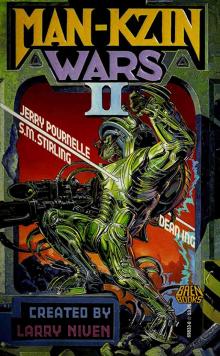 Larry Niven's Man-Kzin Wars II
Larry Niven's Man-Kzin Wars II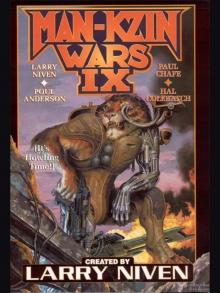 Man-Kzin Wars IX (Man-Kzin Wars Series Book 9)
Man-Kzin Wars IX (Man-Kzin Wars Series Book 9)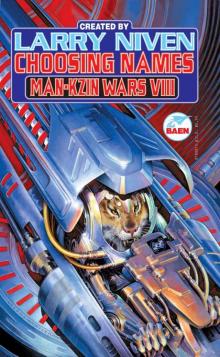 Choosing Names: Man-Kzin Wars VIII (Man-Kzin Wars Series Book 8)
Choosing Names: Man-Kzin Wars VIII (Man-Kzin Wars Series Book 8)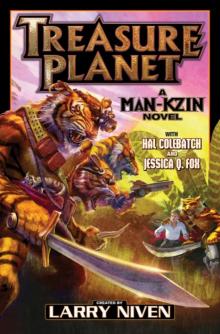 Treasure Planet - eARC
Treasure Planet - eARC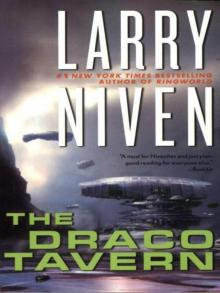 The Draco Tavern
The Draco Tavern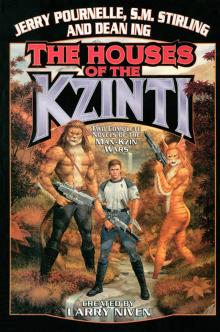 Larry Niven’s Man-Kzin Wars - The Houses of the Kzinti
Larry Niven’s Man-Kzin Wars - The Houses of the Kzinti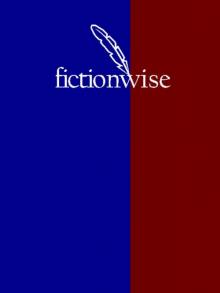 The Fourth Profession
The Fourth Profession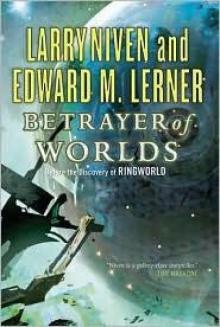 Betrayer of Worlds
Betrayer of Worlds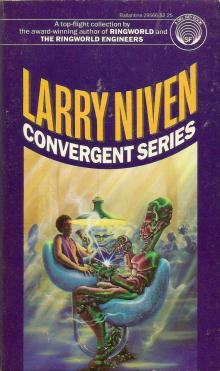 Convergent Series
Convergent Series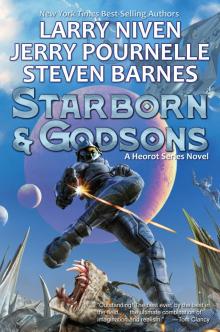 Starborn and Godsons
Starborn and Godsons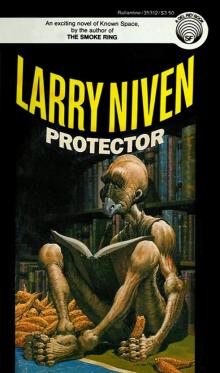 Protector
Protector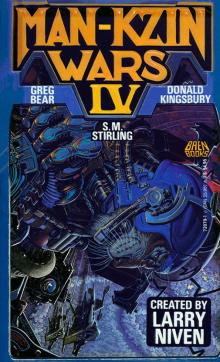 Larry Niven’s Man-Kzin Wars - IV
Larry Niven’s Man-Kzin Wars - IV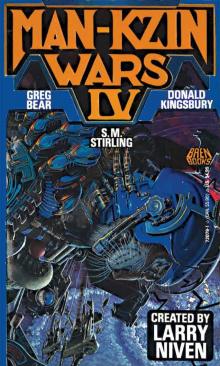 Man-Kzin Wars IV (Man-Kzin Wars Series Book 4)
Man-Kzin Wars IV (Man-Kzin Wars Series Book 4)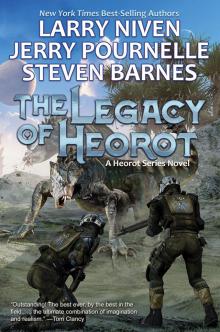 The Legacy of Heorot
The Legacy of Heorot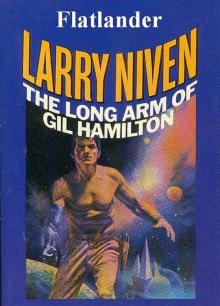 03-Flatlander
03-Flatlander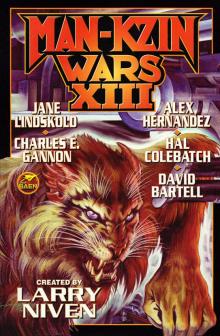 Larry Niven’s Man-Kzin Wars - XIII
Larry Niven’s Man-Kzin Wars - XIII Destiny's Road
Destiny's Road Fate of Worlds
Fate of Worlds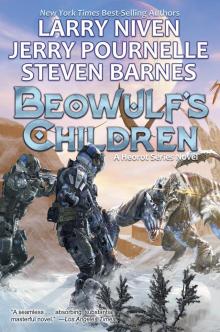 Beowulf's Children
Beowulf's Children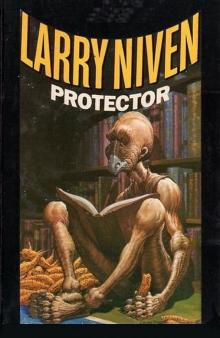 04-Protector
04-Protector The Flight of the Horse
The Flight of the Horse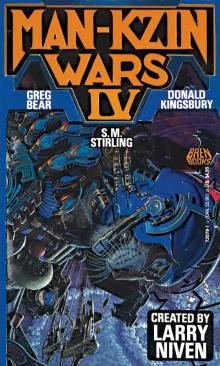 Man-Kzin Wars IV
Man-Kzin Wars IV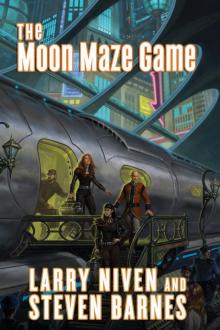 The Moon Maze Game dp-4
The Moon Maze Game dp-4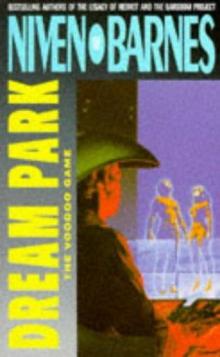 The California Voodoo Game dp-3
The California Voodoo Game dp-3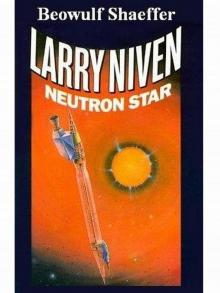 07-Beowulf Shaeffer
07-Beowulf Shaeffer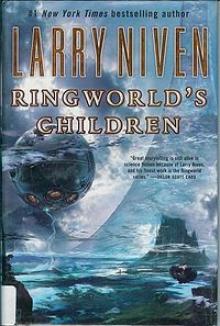 Ringworld's Children r-4
Ringworld's Children r-4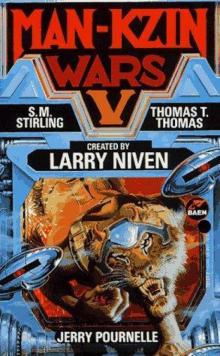 The Man-Kzin Wars 05
The Man-Kzin Wars 05 The Man-Kzin Wars 12
The Man-Kzin Wars 12 Lucifer's Hammer
Lucifer's Hammer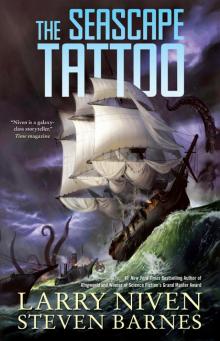 The Seascape Tattoo
The Seascape Tattoo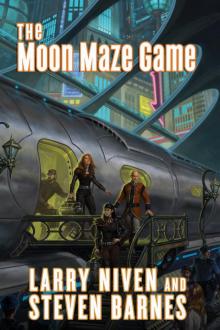 The Moon Maze Game
The Moon Maze Game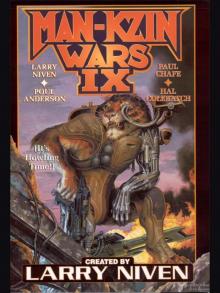 Man-Kzin Wars IX
Man-Kzin Wars IX All The Myriad Ways
All The Myriad Ways More Magic
More Magic 02-World of Ptavvs
02-World of Ptavvs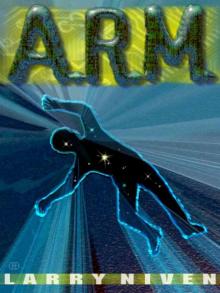 ARM
ARM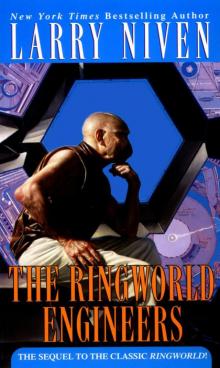 The Ringworld Engineers (ringworld)
The Ringworld Engineers (ringworld)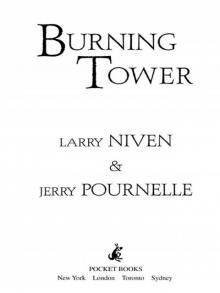 Burning Tower
Burning Tower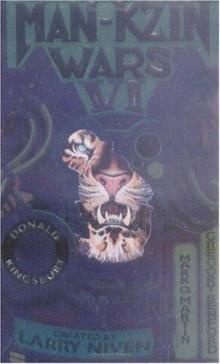 The Man-Kzin Wars 06
The Man-Kzin Wars 06 The Man-Kzin Wars 03
The Man-Kzin Wars 03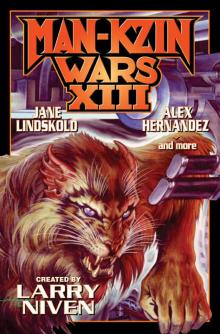 Man-Kzin Wars XIII-ARC
Man-Kzin Wars XIII-ARC The Hole Man
The Hole Man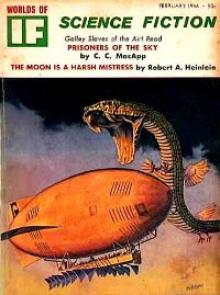 The Warriors mw-1
The Warriors mw-1 The Houses of the Kzinti
The Houses of the Kzinti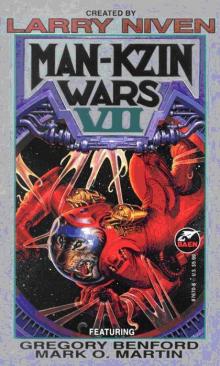 The Man-Kzin Wars 07
The Man-Kzin Wars 07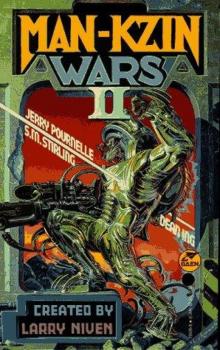 The Man-Kzin Wars 02
The Man-Kzin Wars 02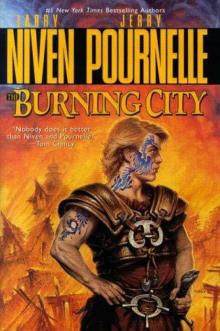 The Burning City
The Burning City At the Core
At the Core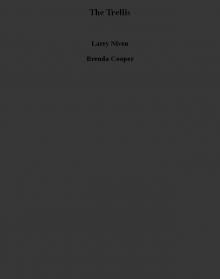 The Trellis
The Trellis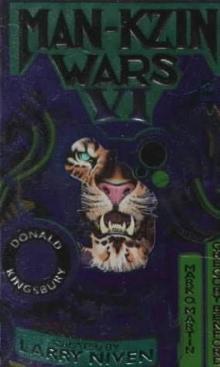 The Man-Kzin Wars 01 mw-1
The Man-Kzin Wars 01 mw-1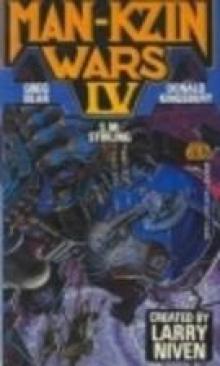 The Man-Kzin Wars 04
The Man-Kzin Wars 04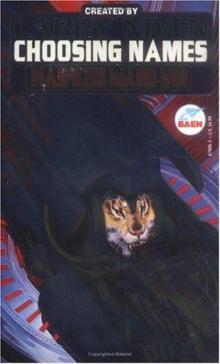 The Man-Kzin Wars 08 - Choosing Names
The Man-Kzin Wars 08 - Choosing Names Dream Park
Dream Park How the Heroes Die
How the Heroes Die Oath of Fealty
Oath of Fealty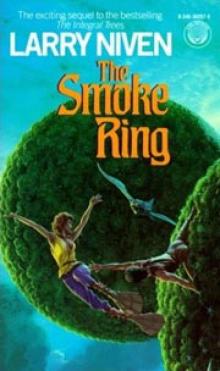 The Smoke Ring t-2
The Smoke Ring t-2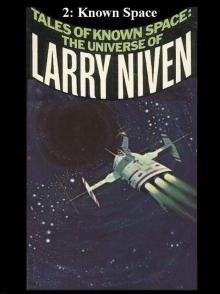 06-Known Space
06-Known Space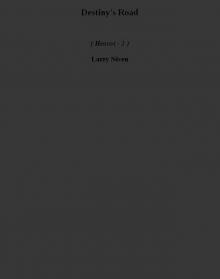 Destiny's Road h-3
Destiny's Road h-3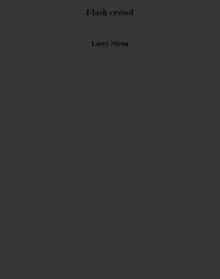 Flash crowd
Flash crowd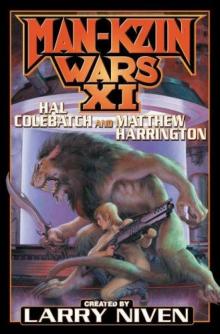 The Man-Kzin Wars 11
The Man-Kzin Wars 11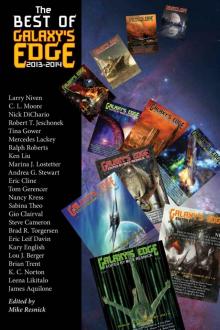 The Best of Galaxy’s Edge 2013-2014
The Best of Galaxy’s Edge 2013-2014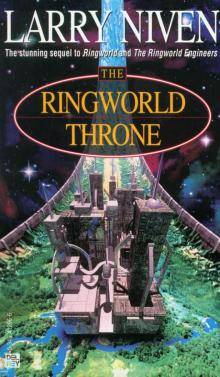 The Ringworld Throne r-3
The Ringworld Throne r-3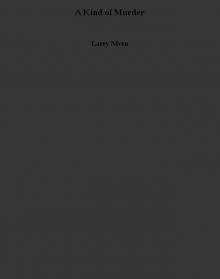 A Kind of Murder
A Kind of Murder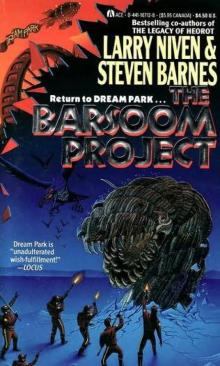 The Barsoom Project dp-2
The Barsoom Project dp-2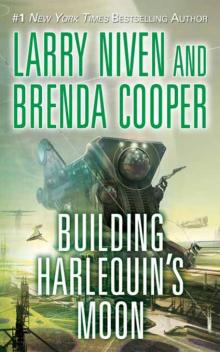 Building Harlequin’s Moon
Building Harlequin’s Moon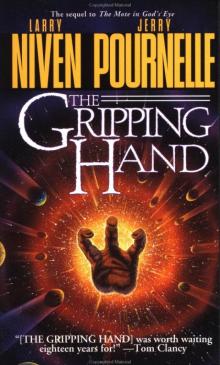 The Gripping Hand
The Gripping Hand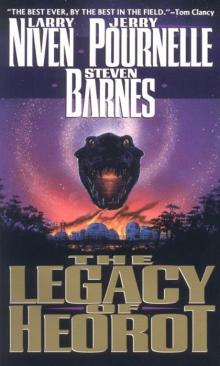 The Leagacy of Heorot
The Leagacy of Heorot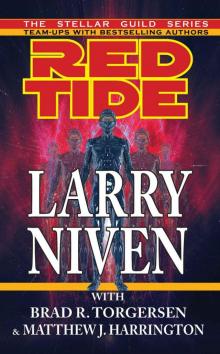 Red Tide
Red Tide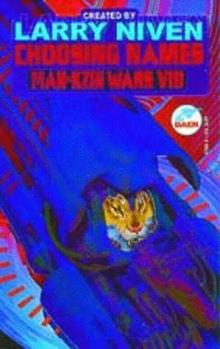 Choosing Names mw-8
Choosing Names mw-8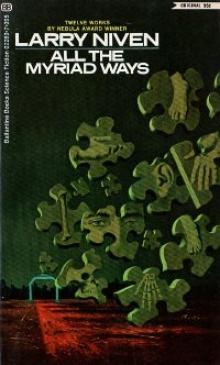 Inconstant Moon
Inconstant Moon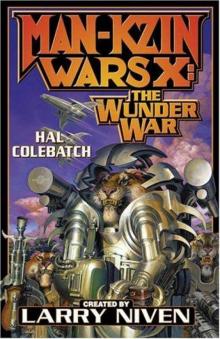 The Man-Kzin Wars 10 - The Wunder War
The Man-Kzin Wars 10 - The Wunder War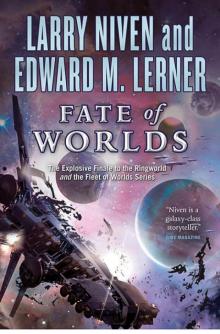 Fate of Worlds: Return From the Ringworld
Fate of Worlds: Return From the Ringworld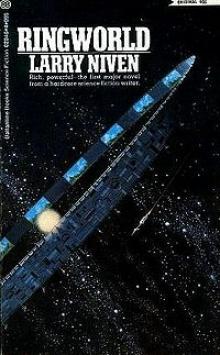 Ringworld r-1
Ringworld r-1 05-A Gift From Earth
05-A Gift From Earth The Integral Trees t-1
The Integral Trees t-1 Footfall
Footfall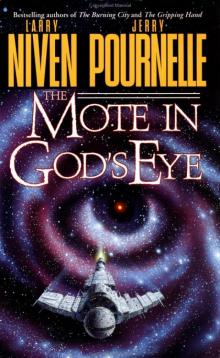 The Mote In God's Eye
The Mote In God's Eye Achilles choice
Achilles choice The Man-Kzin Wars 01
The Man-Kzin Wars 01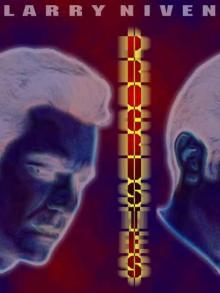 Procrustes
Procrustes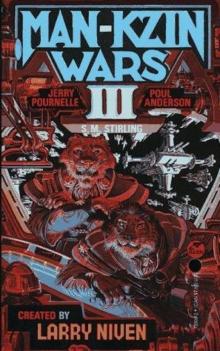 The Man-Kzin Wars 03 mw-3
The Man-Kzin Wars 03 mw-3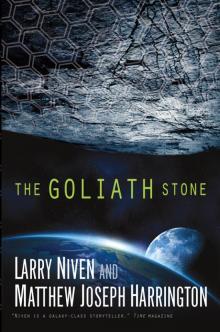 The Goliath Stone
The Goliath Stone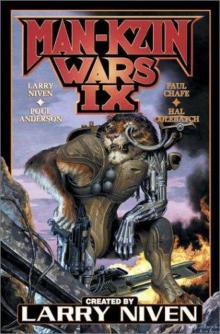 The Man-Kzin Wars 09
The Man-Kzin Wars 09